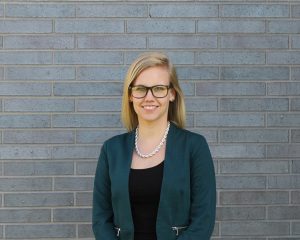Getting smarter about social for your school
By Sharon Aschaiek | Sept. 19, 2018

Understanding your school’s social media performance analytics is one thing. Actually putting these insights into action? That takes a bit more effort and ingenuity.
Recently, Sara Weales made it her mission to strategically improve social media outcomes for the University of Toronto Scarborough Campus.

Weales is a former digital communications officer for the school (she very recently left for a new job), and worked in a department of two together with her manager. She oversaw accounts for Facebook — for sharing general news and major announcements; Twitter — to engage with journalists, local politicians and the community; and Instagram — to highlight beautiful or interesting campus spots or to profile students.
Last December, when campus activity slowed down for the winter break, she decided to create a campaign highlighting the school’s most successful social media posts of 2017. That exercise led her to take a closer look at the trends driving their most popular content.
“I dove into the analytics as I’d never done before, and started to see interesting themes emerge on what worked and what didn’t,” says Weales, who presented on this initiative at the 2018 #PSEWEB conference.
Understanding highs and lows
These topics struck a chord: celebrity news — Barack Obama and Prince Harry visited the campus in December, animals on campus — particularly dogs and geese, students engaged in meaningful initiatives, and personal profiles of students.
“None of these themes were surprising,” Weales says.
But what was surprising was discovering what topics didn’t resonate: local politics, the campus art gallery, and items relating to specific student populations.
“All of these subjects are still important, but the stats suggested we might need to adjust how we framed these posts, or how often we posted about these subjects,” Weales says.
Improving the process
Starting in January, Weales began reviewing social media performance weekly, and sharing her findings at weekly meetings with the news team that provides most of the content ideas. She also began tracking analytics monthly and documenting the results in a spreadsheet, which she also shared with the news team.
Weales also shared her data at monthly meetings with other communicators on campus, and provided feedback to help them improve tactics for their departmental or faculty posts. As well, she provided quarterly reports to all faculty and department members to keep them updated on social media performance trends.
The key part of this endeavour has been applying the insights to practice. Weales calibrated posts according to her findings in order to better engage key constituents, including prospective, current and former students.
Sometimes, that meant giving more of what people seem to want: animals, great campus shots, exciting news. Other times, that means taking risks. In the past, results showed sharing information on campus events didn’t do well, likely because they are niche topics without wide appeal. However, she decided to share an event about a student-run event on what it takes to get into and succeed at medical school, and she says the level of engagement was through the roof.
“What’s important is to keep experimenting, because sometimes it’s the unexpected that does well,” Weales says.
The efforts paid off: the best posts have achieved increasingly more engagements, while the least popular ones aren’t as bad, metrics-wise, as they used to be.
The experimenting will continue, with one next step being A/B testing of struggling content on Facebook.
In summary, Weales says, “Keep learning about your audience, celebrate your best posts and analyze the worst, and keep trying new things.”